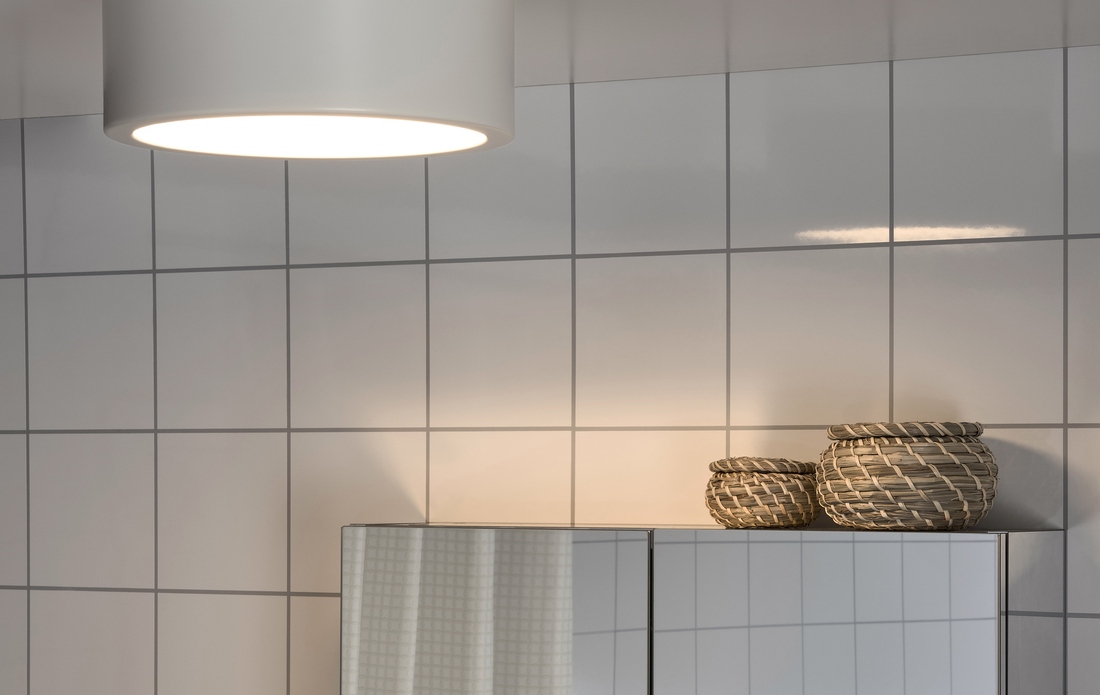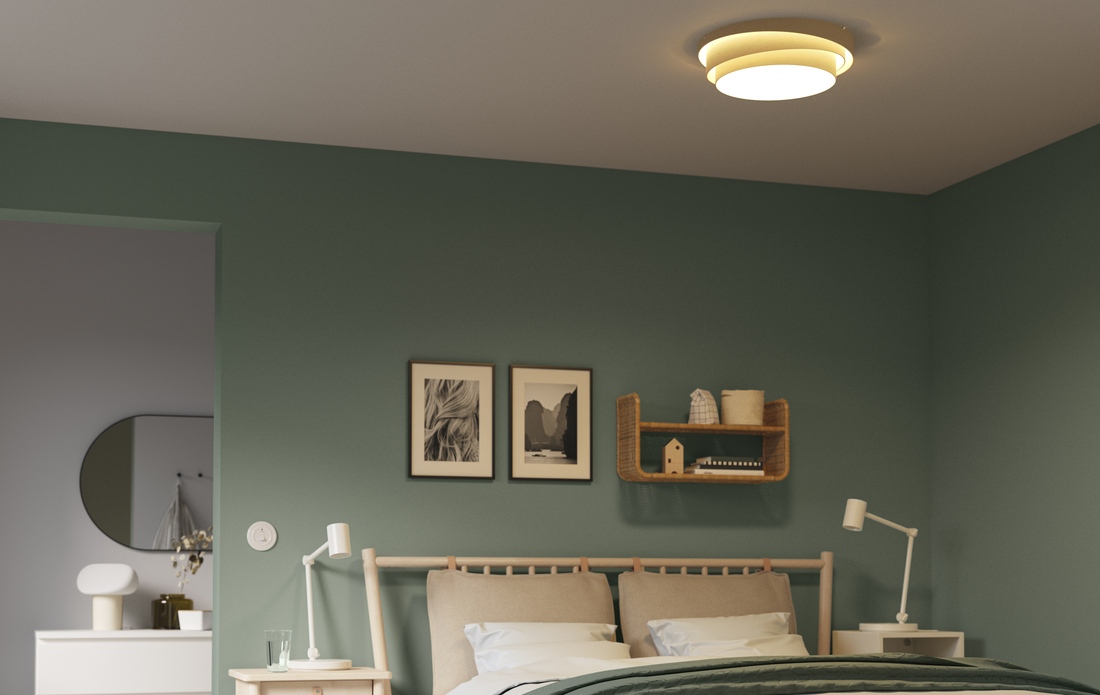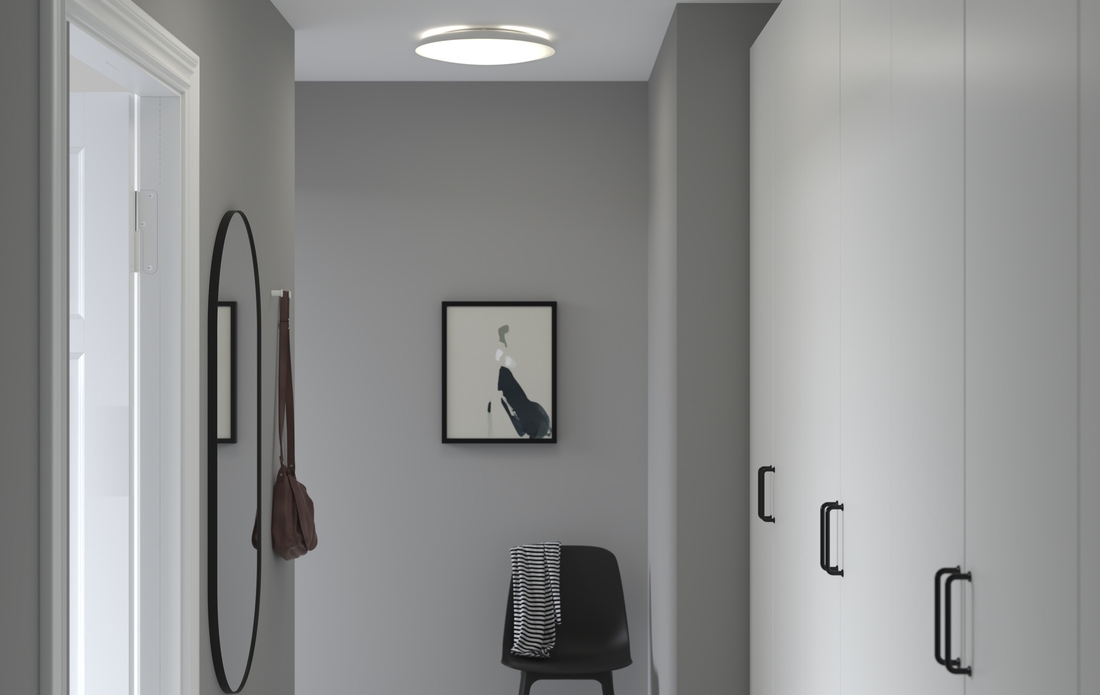Choosing the right type of downlight for your home’s ceiling is essential to ensure optimal lighting. Make sure to select energy-efficient LED lights that match your needs and interior design.
Types of Downlights Based on Light Source
- LED Downlights
Downlights can be categorized based on their light source, namely LED downlights and halogen downlights.
LED downlights are more energy-efficient, provide better illumination, and distribute light evenly on walls and narrow hallways in the home.
- Halogen Downlights
Unlike LED downlights, halogen downlights produce a warmer light, but they consume more electricity and have a shorter lifespan.
Types of Downlights Based on Installation Method
Recessed Downlight
A recessed downlight is a type of downlight installed hidden within the ceiling, creating a minimalist appearance and a cleaner room layout. This type of downlight is ideal for lighting needs in living rooms, bedrooms, or common areas, as it evenly distributes light on walls and hallways.
Surface-Mounted Downlight
A surface-mounted downlight is installed directly onto the ceiling without the need to cut into it, making the installation process easier. This type of light is highly durable and suitable for narrow room corners, creating the illusion of a more spacious area.
What Are the Disadvantages of Downlights?
Although downlights are popular for their minimalist design and even lighting, there are some drawbacks to consider. Here are some disadvantages of downlights:
Limited Lighting Angle
LED downlights emit light directly downward, making the illumination more focused and less suitable for widespread room lighting. This type of downlight is often used to highlight specific areas, such as room corners or narrow hallways.
Installation Requires Precise Planning
Installing downlights requires careful planning and calculation to ensure even light distribution. Incorrect placement can result in dim areas or unwanted shadows.
Cost and Maintenance of Downlights
One of the main drawbacks of LED downlights is their higher price compared to regular bulbs, along with relatively high installation costs. Installing downlights at home often requires extensive wiring and may involve cutting into the ceiling, especially for recessed downlights.
How to Choose the Right Downlight for Your Ceiling
Selecting the right downlight is essential to ensure optimal lighting in every room. From light color to the number of lights needed, check out these tips for more effective illumination!
Choosing the Right Light Color for a Dramatic Effect
Selecting the right light color is crucial to creating the desired ambiance in an interior. LED lights with cool white light provide bright and modern illumination, making them ideal for workspaces, kitchens, or bathrooms.
Meanwhile, warm white light from downlights creates a cozier and more inviting atmosphere, perfect for living rooms or bedrooms.
Ensuring Downlights Suit Your Lighting Needs
Each room has different lighting requirements. In the living room, use evenly distributed lighting to create an open and welcoming feel.
For the kitchen, choose brighter lights to ensure better visibility in cooking areas. Meanwhile, in the bedroom, opt for softer lighting to establish a relaxing and calming atmosphere.
How to Calculate the Number of Downlights Needed in a Room
Since downlights are relatively small, a single fixture is often insufficient for comprehensive lighting. Therefore, choosing the right type of light and determining the necessary number of downlights is essential.
Installation should be based on room size, ceiling height, and lighting needs. Ensure proper spacing between lights for optimal illumination.
Read also: Creating a Cool and Comfortable Ambiance for Rest with LED Ceiling Lights in the Bedroom
How to Properly Install Downlights on the Ceiling
Installing downlights correctly is essential to ensure optimal lighting and electrical safety at home. Here is a step-by-step guide for installing downlights.
Tools and Materials Needed for Installing Downlights
Before installing downlights, make sure you have prepared the necessary tools and materials. Some of these include cables, LED lamp fittings, and the appropriate ceiling hole size to ensure optimal downlight installation.
Additionally, the type of downlight you choose should be tailored to your lighting needs to achieve the best illumination results.
Steps to Install Downlights
- Preparing the Electrical Installation
Prepare the electrical wiring before cutting the ceiling. If you lack experience, consider hiring a technician to ensure a safe downlight installation.
- Cutting a Hole in the Ceiling
Use a hole saw to cut a hole in the ceiling according to the required downlight size for a precise and neat installation.
- Installing the Downlight Housing
Insert the housing into the hole and ensure the lamp is securely fitted by tightening it with clips or screws.
- Connecting the Electrical Wires
Connect the electrical wires to the LED lamp housing using a terminal connector, following the manufacturer's instructions for safe and optimal lighting.
- Installing the Downlight Trim
Secure the downlight by pressing the trim until it is flush with the ceiling, creating a clean and minimalist interior look.
- Testing the Light
Turn on the power and ensure the light functions properly. If there are any issues, check the downlight type and wiring connections to prevent lighting disruptions.
Ensure the Downlight is Safely Installed and Functions Optimally
Before turning on the downlight, make sure all wires are properly connected and there are no loose connections.
Additionally, check the downlight type and the ceiling hole size to ensure the lamp is securely and safely installed. After installation, test the light to confirm that the illumination functions optimally.
Achieve Ideal Lighting with Downlights






